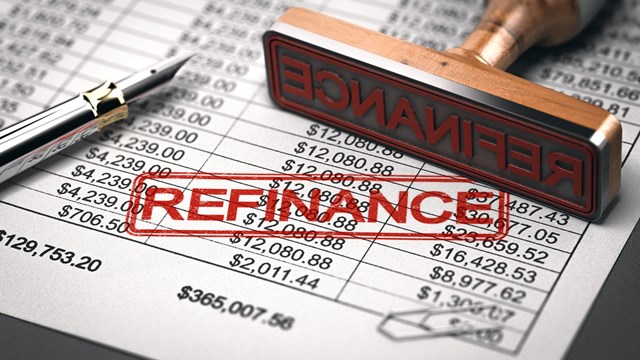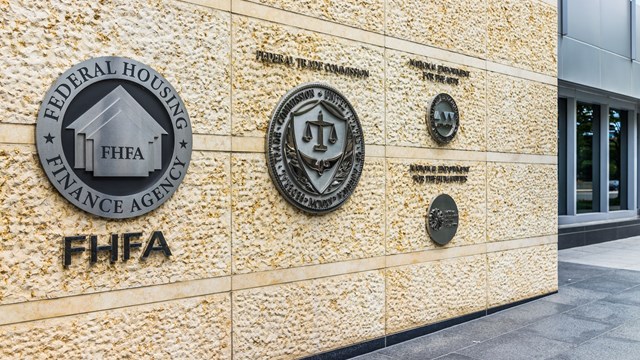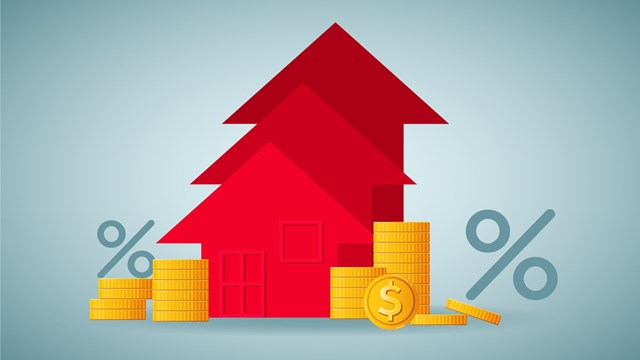
Although New Jersey housing cooperatives may be rare compared to the numbers of co-ops in New York City, suburban co-ops face the same types of issues as their big-city neighbors. One of the primary concerns of nearly all co-ops is the building's underlying mortgage, which is paid for by shareholders as part of their monthly maintenance fee. Sometimes, special circumstances arise that require the board to take another look at the co-op's mortgage. For example, major expenses for essential repairs or improvements might necessitate refinancing or taking out a second mortgage. But one size doesn't fit all in such cases and different mortgage products and loan structures present various financial options for cooperatives.
Mortgages Then … and Now
Although mortgages of one kind or another have been in existence for hundreds of years, various products have come into existence only in the last couple of decades, and most of them have been tied to the overall economic climate.
"Mortgages have dramatically changed in the past 10 years, when treasury rates came down to historic lows," says Steven Geller, director of the Co-op Select department at Meridian Capital Group in Manhattan. "Before 1998, most banks loaned money on their portfolios, basically investing part of their depositors and investors funds. The interest rate was set based on treasuries, but not tied directly to them."
"When the 10-year T-bill dropped and dropped to the low three percent range, banks became wary of loaning long-term money at low rates," Geller continues. "Lenders started securitizing their mortgages - essentially making several loans, putting them together in a pool and selling the pool to an institutional investor. The banks would sell the loans; recover all of the money loaned, plus an additional fee for their effort. Then they would put that money back out into the market, pool and sell them again."
According to Geller, the interest rates on securitized loans were more competitive because of supply and demand for these pools and because there was less added risk that would drive up the rate on longer-term loans. "The market set the spreads, and these securitized lenders had to compete, driving the rates down further. That's where we are today," he says. Geller points out that the past few months have seen added scrutiny of loans that are sold in pools.
"Riskier loans are being evaluated as worth less in a pool, and that is raising the spreads to reflect the added risks," he says. "Still, loans today are being made between 0.80 percent and 1.25 percent above the treasury bill, which makes mortgage money still very inexpensive."
Choosing the Best Product
It can be difficult to know exactly which avenue to take if you're looking at the plethora of mortgage and loan products on the market today. Some of the most common types of loan or mortgage structures include:
Refinancing an existing mortgage: "Cooperatives are fortunate to be able to leverage their land and building as collateral to get extremely competitive long term fixed rates," says Mary Alex Dundics, vice president of National Cooperative Bank (NCB) in Washington, D.C.
"Most cooperative mortgages are 10 to 15 years in length, with a 30-year amortization. After the term is complete, the cooperative would then refinance the outstanding loan amount to a new competitive fixed rate mortgage. This allows co-ops the opportunity to use financing to fund necessary work on the building that occurred over a 10-year period. Other co-ops look to refinance to take advantage of current interest rates. If they see a real savings in the interest cost, they may want to refinance their existing mortgage."
The type of mortgage the co-op chooses can be as individual as the community itself. Reasons for refinancing also vary. "An individual might refinance to get a reduced rate in payment. A board might refinance to gain equity," says Steven Greenberg, residential mortgage managing director at Commerce Bank in Mount Laurel. At Commerce, the majority of the mortgage and loan products are provided through Fannie Mae.
Second mortgages: "A second mortgage is often taken out if the co-op can't refinance its first. When they are prohibited from refinancing due to a lockout or prepayment penalty, it makes sense to look into a second mortgage," says Mindy Goldstein, senior vice president of NCB, who works in the organization's Manhattan office.
"Second mortgages are adjustable rate mortgages that are fixed on either the three-year or five-year treasury," says Dundics.
Interest-only mortgages: These offer the advantage of keeping payments down. "In a low interest rate environment it's easy to pay off some principal," says Goldstein. "With an interest-only loan, co-ops are able to borrow more money but keep their payments low, which keeps monthly payments down."
A line of credit: This can help co-ops address existing capital improvement needs or possibly bolster reserve funds and address additional financial needs during the term. "The additional line of credit, which we provide with all of our co-op loans, is like a credit card. The rate is a little higher than the underlying mortgage, and the rate floats, but it's a great way to spread out an assessment over a longer period of time, reducing the burden on the shareholders," says Geller.
"A line of credit is also used if a co-op can't refinance the first mortgage," adds Goldstein. "You'd get a second fixed or a line of credit, which enables you to pay as you go."
This loan structure can be used to fund future improvements or used to pay for unexpected repairs. The line of credit is based on a floating rate of interest. "Cooperatives will pay interest only on the amount they pay down and can be prepaid at anytime," says Dundics.
If your co-op is lucky enough to have paid off its mortgage—or this is due to happen in the near future—congratulations. But what happens after that final payment? Thinking about your next step now will ensure that funds are properly allocated for the co-op's specific needs. These might include long-term capital improvement goals or immediate repair work.
"If the cooperative pays off the mortgage, we would advocate that they do not reduce maintenance fees, but rather use that excess fee to start a healthy reserve account," says Dundics. "Most of the co-ops we deal with tend to not pay off the underlying mortgage, but rather when the balloon balance comes due to refinance the existing debt to a new mortgage. At that time, co-ops can then increase the loan amount to account for any current or future repairs for the building that need to be financed."
Today, there also are many options available to interested buyers looking to purchase units. Attractive rates and various types of loan structures are making it easier for many buyers to enter the market or refinance an existing loan.
"Cooperative owners can get share loans or home equity lines of credit, with the stock certificate used as collateral. Share loans are structured similar to condo or single-family loans," says Dundics. Share loans are either fixed (with 15-year to 40-year fixed) or adjustable rate mortgages (1/1, 3/1 5/1 ARMs, 7/1 ARMs).
She adds that shareholders also are able to obtain home equity lines of credit and home equity loans (from 10- or 25-year fixed rate loans) for any capital improvements within their unit, or to refinance existing debt.
"Commerce Bank offers borrowers every Fannie Mae mortgage product. But the type that shareholders can utilize depends on what boards will and will not approve," cautions Greenberg. "Fannie Mae makes every product available, but individual co-ops may choose what to accept. For instance, some won't accept an interest-only mortgage without a certain percentage down."
New Mortgage Products
NCB has a loan product called Early Rate Lock Program (ERL) that allows co-ops to take advantage of the current low interest rates and lock in the rate early for up to 12 months. The cooperative can take advantage of this product and start the loan process with paying a fee.
"For a cooperative property holding a mortgage with a large prepayment penalty, the opportunity to benefit from borrowing at today's desirable interest rate levels has not been a viable option. Such a property has been sidelined, biding time until the prepayment window opened," explains Dundics. "Now, cooperatives have another option to bypass this obstacle and take advantage of current interest rates, thanks to early rate lock programs, like the one offered by NCB."
Meridian has introduced a product that has proven advantageous for larger co-ops. "The most exciting mortgage available for larger buildings is what we call the lender contribution mortgage. There are many co-ops with mortgages of $5 million and up that are paying a high rate in a long-term loan. The penalties are high, and really restrict the co-op from restructuring the loan," says Geller.
"About three years ago we came up with a scenario where one of our lenders will actually pay a portion of the prepayment penalty to another lender and cut a check at closing, in exchange for a modest increase in the rate on the new loan. For co-ops that have high rates now (6.75 percent or more), this gives them the ability to refinance without adding the whole penalty to the new mortgage amount, take out new money needed by the co-op, and still lower their rate on the new loan," says Geller.
How Much to Borrow?
Co-ops have the advantage of being able to obtain competitive rates to pay for large improvements. "Cooperatives should work with a bank that first and foremost understands cooperatives and the needs of the cooperatives. Flexibility is key and they should work with an institution that offers guidance, expertise and customized loan products," says Dundics.
"The loan amount is typically related to the amount of capital improvements or repairs that the board would like to undertake, plus any existing debt on the property. Banks will also look at the cooperative's ability to repay the debt, and the loan to value," says Dundics. "Boards can get assistance from their managing agents, the loan officer at the bank or hire a mortgage broker who can assist in the process."
At Commerce Bank, the majority of loans are provided through Fannie Mae and based on its guidelines. Fannie Mae doesn't lend directly to the individual or co-op; instead, it works with partners, such as Commerce, to make sure money is available to lend, explained Greenburg.
Fannie Mae has a hotline (800-7FANNIE) and website (www.fanniemae.com) dedicated to helping borrowers obtain information and navigate the mortgage process. Those in the market for a mortgage can also locate specific lenders through the hotline and website.
"The worst mistakes co-ops make is to take a loan with a long term lockout, prohibiting them from refinancing if they have to, and to lock themselves into long-term self-liquidating loans when they will certainly need to raise additional money long before the end of that term," says Geller.
"There are just a handful of lenders in the Northeast who are even competing at the highest level—and without an expert in the market, on a daily basis, it is hard to know if you're getting the best available deal. And any mistake in financing a building translates into dollars left on the table, or lost during the term through poor planning," says Geller.
Consulting an expert and examining your co-op's needs are the first steps in determining the best mortgage product. Work with your managing agent and broker to look at your current needs and ahead to future expenditures. Careful planning now will ensure that your co-op utilizes the most effective loan structure, which will result in a healthy bottom line today as well as available funds for projected improvements.
Stephanie Mannino is a freelance writer and published author living in Hoboken, New Jersey.






Leave a Comment